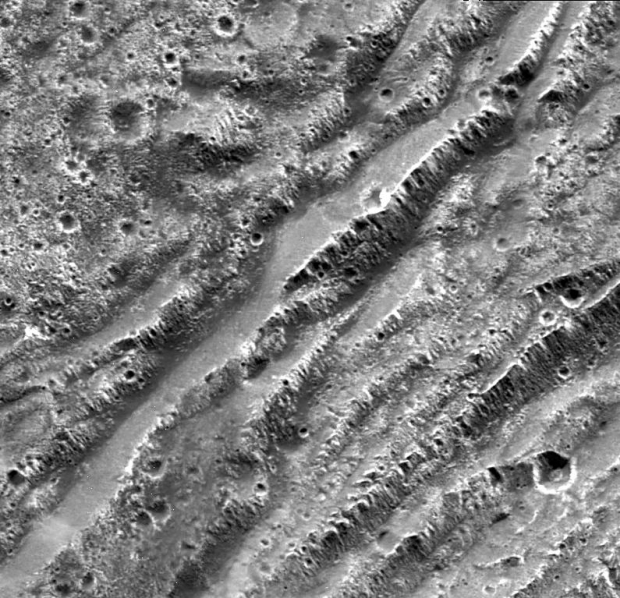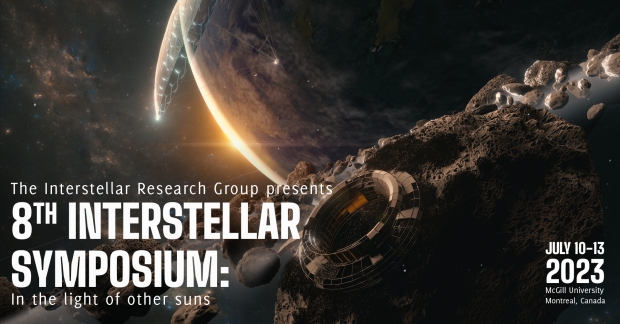
In celebration of the recent JUICE launch, a few thoughts on what we’re learning about Ganymede, with eight years to go before the spacecraft enters the system and eventually settles into orbit around the icy moon. Specifically, let’s consider a paper just published in Icarus that offers results applicable not just to Ganymede but also Europa and Enceladus, those fascinating and possibly life-bearing worlds. We learn that when we look at the surface of an icy moon, we’re seeing in part the result of quakes within its structure caused by the gravitational pull of the parent planet.
Image: ESA’s latest interplanetary mission, Juice, lifted off on an?Ariane 5 rocket?from?Europe’s Spaceport?in French 09:14 local time/08:14 EDT on 14 April 2023 to begin its eight-year journey to Jupiter, where it will study in detail the gas giant planet’s three large ocean-bearing moons: Ganymede, Callisto and Europa. Credit: ESA.
The Icarus paper homes in on the link between such quakes, long presumed to occur given our understanding of gravitational interactions, and the landslides observable on the surface of icy moons. It’s one thing to tag steep ridges surrounded by flat terrain as the result of ‘ice volcanoes’ spouting liquid, but we also find the same result on moons whose surface temperature makes this explanation unlikely.
Thus the new work, described by lead author Mackenzie Mills (University of Arizona), who analyzed the physical pummeling icy terrain takes during tidally induced moonquakes:
“We found the surface shaking from moonquakes would be enough to cause surface material to rush downhill in landslides. We’ve estimated the size of moonquakes and how big the landslides could be. This helps us understand how landslides might be shaping moon surfaces over time.”

Image: NASA’s Galileo spacecraft captured this image of the surface of Jupiter’s moon Ganymede. On Earth, similar features form when tectonic faulting breaks the crust. Scientists modeled how fault activity could trigger landslides and make relatively smooth areas on the surfaces of icy moons. Credit: NASA/JPL/Brown University.
This is ancient terrain indeed, located within Ganymede’s Nicholson Regio near the border with Harpagia Sulcus. Which leads to a quick digression: One of the pleasures of discovery is the growing familiarity with the names of surface features we are beginning to see close up. We’ve known enough about Ganymede thanks to craft in the system (the above image is from the Galileo probe) to have already named many features, but with New Horizons we were naming as we went, seeing surface detail for the first time. Ponder how familiar we will become with the surface features of Ganymede once JUICE settles into its multi-year orbit around the moon. We’ll be tossing off references to Nicholson Regio with ease.
As to the latter, the terrain is ancient indeed, heavily cratered, and as you can see, riddled with steep slopes and cliffs (scarps) causing crustal fracturing. We’re seeing frozen geological history here, a useful pointer to how moon and planet have interacted over the aeons, and information which may tell us about Ganymede’s interior structure when complemented by the data we can expect from JUICE. Here the scarps form a series of blocks that delineate the boundary between dark and light terrain.
The image in question covers approximately 16 by 15 kilometers, and was taken on May 20, 2000 at a range of just over 2000 kilometers. It’s been some time since I’ve written about Galileo imagery used for anything other than the study of Europa, but of course the craft gave us priceless data about the entire Jovian moon system despite its high-gain antenna problems. Here the resolution is 20 meters per pixel. Below is another Galileo snapshot, this one of Europa and likewise showing scarp formations.

Image: An image of Jupiter’s moon Europa captured in the 1990s by NASA’s Galileo shows possible fault scarps adjacent to smooth areas that may have been produced by landslides. Credit: NASA/JPL-Caltech.
We’re looking at what appear to be fault features, scarps adjacent to much smoother areas. Is this the result of material cascading out into surrounding terrain as the result of a landslide? Co-author Robert Pappalardo (JPL) notes the likelihood, even when we’re talking about much smaller celestial objects than Ganymede or Europa. Much studied Enceladus, in fact, has a mere 3% of the surface area of Europa:
“It was surprising to find out more about how powerful moonquakes could be and that it could be simple for them to move debris downslope. Because of that moon’s small gravity, quakes on tiny Enceladus could be large enough to fling icy debris right off the surface and into space like a wet dog shaking itself off.”
The paper underlines the point:
By measuring scarp dimensions, we aim to better understand the formation of faults and associated mass wasted deposits, given abundant evidence of past and/or recent tectonic and seismic environments on these icy worlds. For studied scarps, we estimate a moonquake moment magnitude range Mw = 4.0–7.9. On Earth, quakes of similar magnitude are the middle and upper end of the log-based magnitude scale and commonly cause significant destruction, including causing mass movements such as landslides. Occurrence of similarly large quakes on icy satellites, which have surface gravities much less than Earth, implies that such quakes could induce significant seismic effects.
You can imagine how much JUICE and Europa Clipper will help in the decoding of such surface features, with sharp improvements in the resolution of our imagery and the prospect of stereo imaging along with subsurface radar sounding deployed for Ganymede and Europa. Thus we build our library of information about the geological processes at work in such exotic venues, and also learn about whether or not their surfaces continue to be active. The nature of the ice shell on Europa is a prime science objective for Europa Clipper, providing further information about the ocean beneath.
The paper is Mills et al., “Moonquake-triggered mass wasting processes on icy satellites,” Icarus Vol. 399 (15 July 2023), 115534 (full text).



Hi Paul
Yes this sure is a super interesting paper, and the new images when they arrive are going to be amazing.
Thanks for the great post.
Cheers Edwin
Always pleased to hear from my friends in New Zealand!
Gas giants like our own outer planets appear to be very common worlds throughout the galaxy and are probably found orbiting many different types of stars. The sample of our own solar system also suggests these worlds have many varied types of satellites. In other words, a satellite orbiting a gas giant (not necessarily an” icy moon”) may be one of the most common abodes for life throughout the cosmos.
We’re fortunate our own system offers so many examples for study.
Closeby Habitable Exoplanet Survey (CHES) has been covered by China Global Television Network, so hopefully it means the program is getting necessary backing and traction.
https://news.cgtn.com/news/2023-04-19/China-searches-for-habitable-planets-orbiting-nearby-Sun-like-stars-1j7LZWOmmju/index.html
“Chinese scientists have proposed a unique exploration program named the Closeby Habitable Exoplanet Survey (CHES) to search for habitable planets from “near neighbors” of the solar system.
In this program, a 1.2-meter-aperture telescope will be sent into a Halo orbit at the second Lagrangian point of the Sun-Earth system.
With the help of high-precision astrometry, it will survey about 100 Sun-like stars within 32 light years away from the solar system, and detect the number, planetary mass, and 3D orbits of the nearby planets. “So far, we have conducted a series of preliminary studies and made great progress,” said CHES principal investigator Ji Jianghui in a recent interview with Xinhua.
According to Ji, who is also a research professor at the Purple Mountain Observatory of the Chinese Academy of Sciences (CAS), the researchers have completed demonstrations of scientific objectives and key technologies, and developed a 1:6 scale prototype of the telescope.”
The six most likely moons in the Sol system to harbor life:
https://www.scientificamerican.com/article/the-six-moons-most-likely-to-host-life-in-our-solar-system/
Nice diagrams, too.